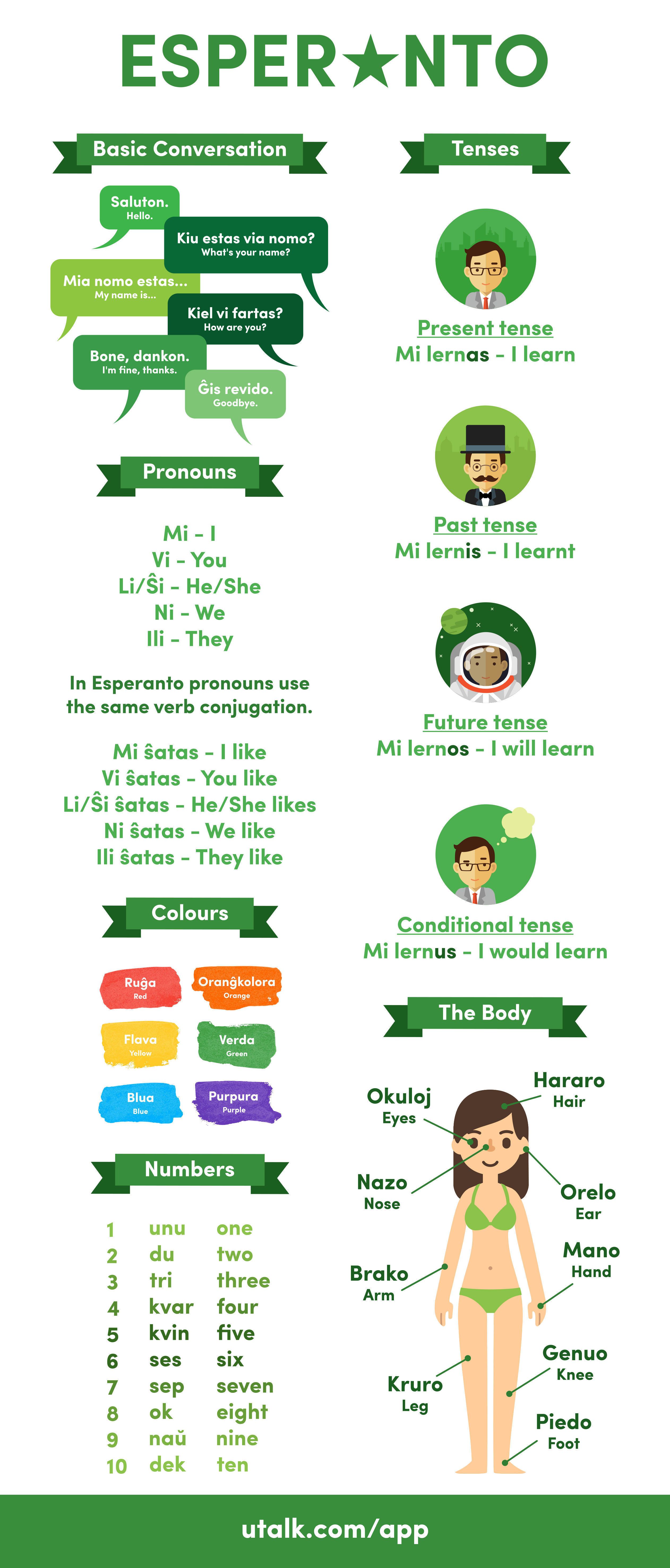Beginner’s guide to Latin
Last week, Latin became the 133rd language to be added to uTalk, our app for iPhone and iPad. (Don’t have an iOS device? You can also learn Latin on your computer.)
And to get you started with Latin, we’ve put together this beginner’s guide with a few essentials – some basic greetings, colours, numbers and parts of the body, along with some Latin phrases we still use in everyday English. As always, please feel free to share!
Embed This Image On Your Site (copy code below):
A beginner’s guide to Esperanto
We hope you’ve enjoyed our Esperanto week! If we’ve convinced you to give the language a try, you might find this handy beginner’s guide a good place to start… Please feel free to share it with anyone you think might be interested.
And for more information about Esperanto, visit edukado.net, a site run by linguist Katalin Kováts, who worked with us on the translation and recording of uTalk Esperanto.
Following a request, this guide is now also available in Spanish.
Embed This Image On Your Site (copy code below):
Know Your Colour Code
Here at EuroTalk we love discovering interesting facts about the world around us, so from now on, on the third Wednesday of each month (or thereabouts!) we’ll be sharing some of these with you. The theme for this month is colours…
Be a man: be yellow
If you call someone ‘yellow’ in England, you’re calling them a coward. In Japan, the opposite is true; yellow is the colour of courage, and while Westerners usually see pink as a feminine colour, in Japan it’s very masculine; it conjures up the memory of fallen samurai.
Poisoned Pens
In China, writing someone’s name in red is unlucky and it usually means you want to cut them out of your life; just make sure you don’t have red ink on your hands if something bad happens to them!
Feeling blue? You’ll regret it in the morning…
In English it’s fairly common to say you’re ‘feeling blue’ if you feel sad. But in Germany, to be blue (‘blau sein’) is to be drunk.
White: it’s the new black
Weddings in the West are all decked out in white, but the same is not true of China, where white is the colour of mourning. Instead, brides wear red, as the colour symbolises good luck.

Purr-fect Opposites
In many cultures, a black cat is seen as lucky: in Japan, it’s believed to attract suitors, and in Scotland a cat arriving at your home is a sign of prosperity coming your way. But in America, the same animal is considered bad luck, particularly by gamblers on their way to the casino.
Colourful Confrontations
Useful information if you find yourself in a fight in Europe… In English, the result might be known as a ‘black eye’, whereas in Germany it’s blue (‘blaues Auge’), in Spain it’s purple (‘ojo morado’) and in France it’s known as an ‘oeil au beurre noir’ (literally ‘eye in black butter’)!
If anyone has any other examples of colour-related facts, we’d love to hear them!


